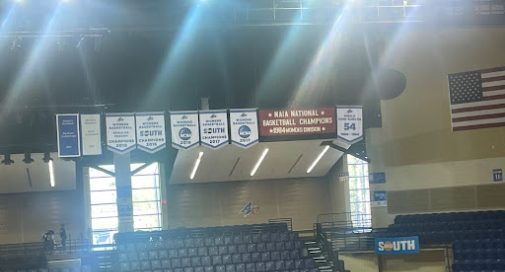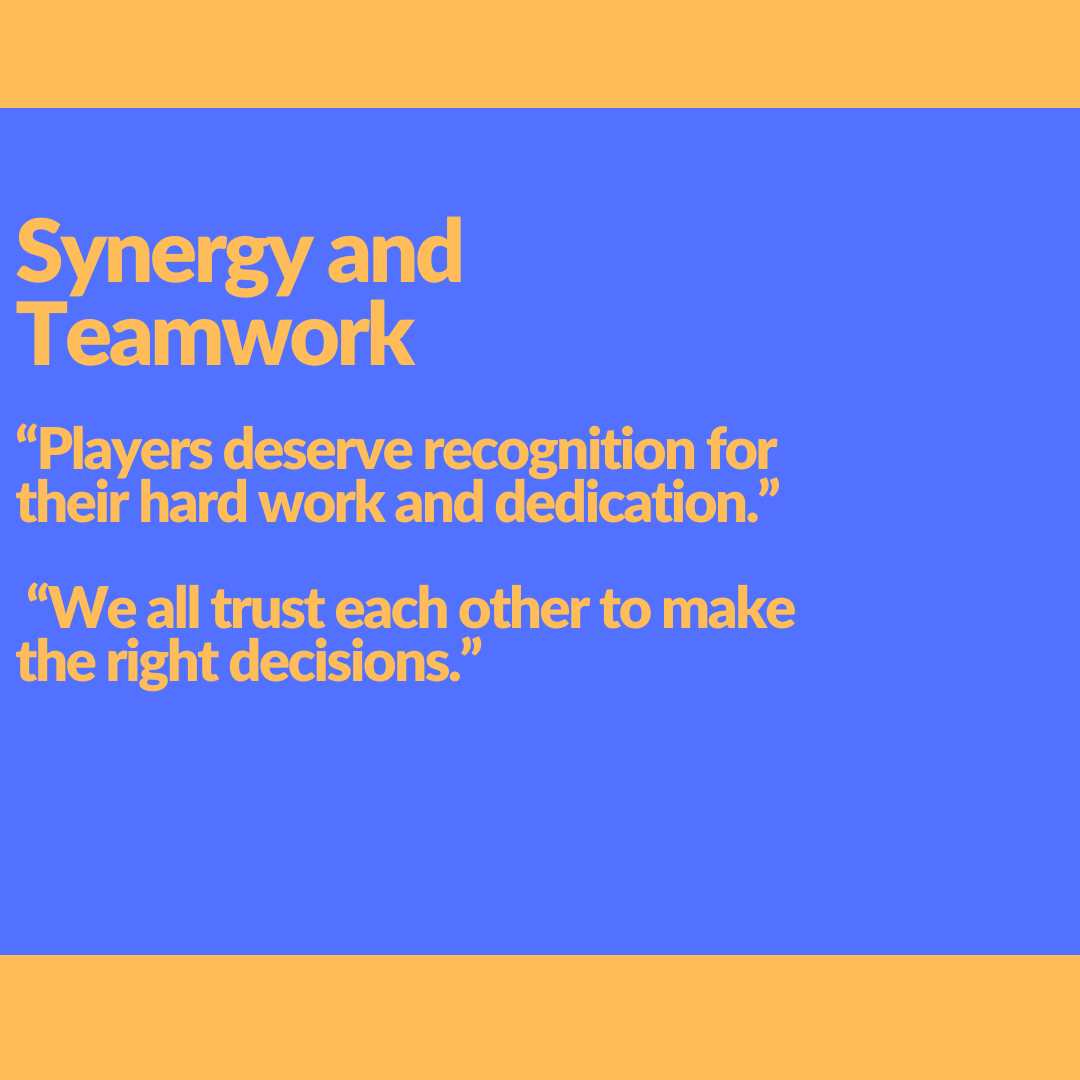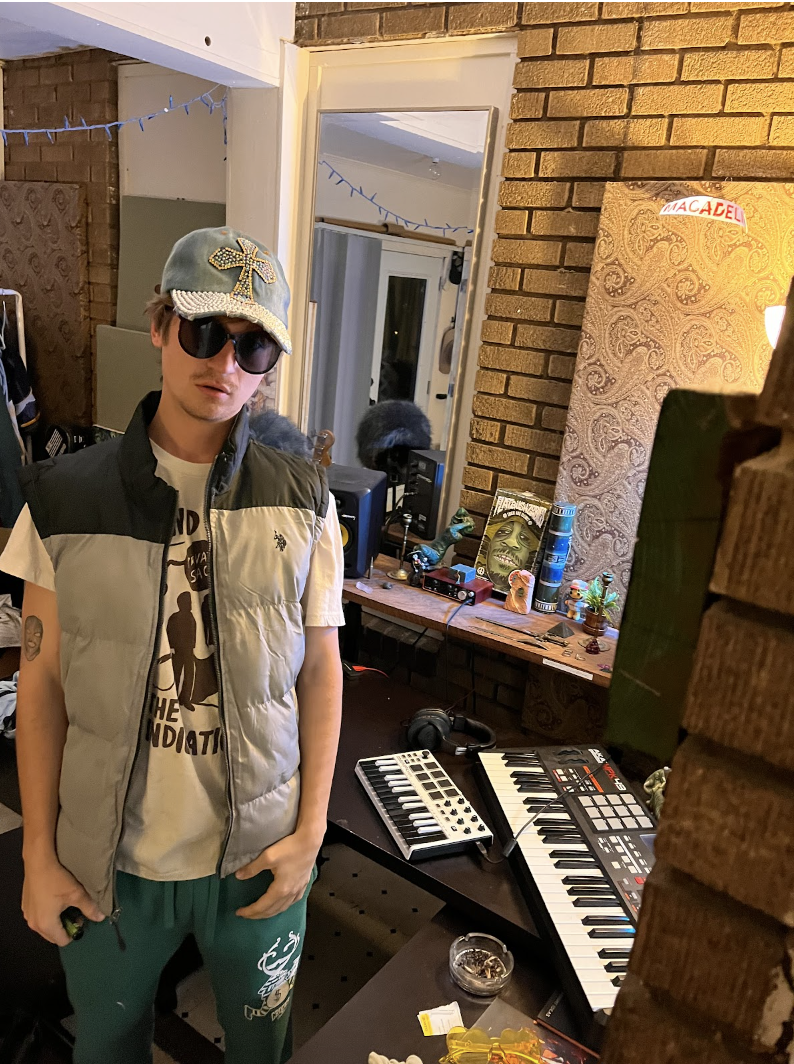By June Bunch – [email protected] – Staff Writer | Jan. 21, 2015 |
Michael Greenfield, founder and teacher at Asheville Community Yoga, glows with sweat from finishing hot yoga. He wipes his brow and gracefully shows a visitor to the tapestry-filled meditation room where inside, he sits in lotus pose.
He said the practice of controlling breath and muscle movements draws interest because it can be a mini-retreat from the hustle of daily life.
“Yoga heals the body,” Greenfield said. “It opens passages for blood to flow through the heart and lungs.”
The origin of yoga, which translates to “union” in Vedic Sanskrit dates back more than 5,000 years to India, according to Greenfield. It spread to America in the 1960s and has been popular in Asheville for 20 years. There are currently more than a dozen yoga studios in town.
“It’s calming which makes a system to find balance. It brings more oxygen to cells to fight off sickness,” Greenfield said. He considers yoga a transformative 24-hour practice because as people stay aware of their breath, they are practicing the foundation of the discipline.
Yoga does not mask moments of displeasure, but works with them. It requires time to master, Greenfield said. He expanded his yoga class schedule and made payment donation-based to accommodate the common obstacles — time and money.
He created extensive variety and availability of classes at his studio to provide ample opportunity to immerse into practice.
“We believe in freedom through service, this place is built on service,” Greenfield said.
Yoga, a community-based practice, brings people together in a healing environment to support each other, according to Greenfield. Unlike doctors’ offices with private rooms and solitary healing, he said yoga allows participants to rejuvenate together in a supportive space.
“The more practice you put into it, the more you understand your body and what it has to say to you. It’s active listening,” Greenfield said.
Acupuncture: Pinning problems and solving them
Radine Lewis, licensed acupuncturist and herbalist practitioner of both Eastern and Western medicine, said she always invites guests into her office to learn about Eastern remedies, and cheerfully welcomes clients to her holistic retreats.
Acupuncture, healing with thin needles placed along specific meridians, has spread throughout Asheville with aim to achieve energetic balance, Lewis said.
“I started out studying Western medicine but had some issues going on with myself that Western medicine didn’t seem to effectively address, so I looked into Chinese medicine and acupuncture,” Lewis said.
Initially, she said she held skepticism toward Eastern medicine. Lewis already had a Western medical scientific background in which everything had to be quantified and substantiated in research, but then she said she learned the effectiveness of alternative medicine.
“Here I was, pursuing this thing that had nothing ground in fact,” Lewis said. “So I exposed myself in it, and even though I didn’t understand it, it was making a really tangible difference.”
Acupuncture, according to her research, initially crossed into America during the 1960s. Chinese medicine gave Western practitioners a new philosophy on finding harmony in balance with nature and self expression through manifestations, she said.
Specializing in infertility, Lewis treats patients through retreats. She said she prefers to break clients away from their daily habits rather than work with them in a clinic because patients often go back to their lives and continue the same patterns despite any dysfunction.
“In the West, medicine is still taught much the way that people in the West approach everything. They want quantifiable remedies,” Lewis said.
Many people experience chronic ill health because of lifestyle or lack of harmony with their existence, Lewis said. This does not come with an easy fix until patients see themselves as the root of all their issues.
Acupuncture, according to Lewis, helps with pain and inflammation with joints but also taps deeply into the autonomic nervous system, which controls things like digestion, respiration, heart rate, endocrine function and other systems. Lewis said she does not merely take care of superficial manifestations but also assists patients to seek out the root of their ailments.
“If someone’s out of sync with their own nature, that’s when imbalance arises that cause lack of ease,” Lewis said.
Symptoms, she said, are conversations the body starts in order to communicate any imbalances. For example, Lewis said unease brings forth symptoms like anxiety and headaches, symptoms which Western medicine has pills to mask but not to heal.
“If you give them a pill, they don’t go to the root to recognize inherent patterns,” Lewis said.
People want to make symptoms stop, she said, but they do not listen to anxiety’s message to look at the reason for its existence.
“Be present with your anxiety and realize when there is a disturbance. Give it a voice and ask what it’s telling you. Often, it’s fear — a response against change. Then you can see it fully, understand it, and help it go away,” Lewis said.
Massage: The healing power of touch
Walking into Debra Macking’s workspace, clients hear meditative music playing in the background. Their noses fill with the scent of lavender as they witness the licensed massage therapist’s dim-lit, comfortable office filled with Eastern medical books and crystals.
Massage, the therapy of applied pressure on specific regions of the body, appeals to people because of its stress relief and tension release, according to Macking.
“Massage is medicine through touch,” she said. “It generally feels good but also increases blood flow, stretches connective tissues and reduces anxiousness.”
After studying neuromuscular therapy at Suncoast School of Massage, Macking undertook massage therapy work in client homes as early as 1999. She later implemented Reiki and cupping techniques into her practice.
“Awareness of holistic medicine opens doors to all sorts of rejuvenating forces,” the massage therapist said.
According to Macking, the therapy confronts spasms, flexibility, biomechanics and strength, depending on the massage technique.
Regarding forms of practice, Macking said her massage approach generally falls under neuromuscular therapy, therapeutic touch, trigger-point bodywork, Swedish or deep-tissue massage.
“Therapeutic touch helps balance energy using light pressure while Swedish massage helps relax the body using gentle movements,” Macking said. “Deep tissue massage intentionally digs deep into the layers of muscle to release tension while trigger point therapy dissipates congested muscles with specific points.”
She said interest in massage initially spread in the states through Pehr Ling and grew later when people witnessed its benefits. Many were not initially aware massage therapy assisted in healing ailments such as scoliosis and migraines, according to Macking.
“They thought of it more as pampering, but it’s more than that. It’s rehabilitation. With that said, some massage works better for some people more than others,” Macking said.
For example, she said clients taking certain medications cannot receive various forms of massage. Macking works with respect to Western medicine, ensuring a healthy balance between her patients’ Western medications and her practice.
“Everyone benefits from a healing touch,” Macking said.
Chinese Herbs: Spicing up new perspectives of health
Chinese herbal medicine, a tradition of natural decoctions and powders, provides clients with natural remedies for Western prescriptions, said Evan Bussanich, a licensed acupuncturist and diplomate of oriental medicine at Silver Leaf Natural Medicine.
Educated in traditional Chinese medicine from Daoist Traditions College of Chinese Medical Arts, Bussanich used his knowledge to start Silver Leaf four years ago, he said. Now, with two former students added to his team, he said his business can practice many modalities ranging from Chinese herbal medicine, massage and acupuncture to Ayurvedic purification and detoxification.
“They didn’t have microscopes or X-rays 2,000 years ago, but the East developed a very sophisticated understanding of the body based on normal function and pathological function,” Bussanich said.
Ancient practitioners experimented through trial and error using rigorous evaluation to bring systems back in balance, according to Bussanich. He said the practice of herbal medicine thrived in China and eventually became popular in America.
“A lot of traditional medical systems developed very advanced medical theories and techniques based around organizing the ways different systems work,” said Lissa Juedemann, a certified diplomate of Oriental medicine also working at Silver Leaf.
New patients continue seeking herbal remedies because they find them less taxing on the body, Bussanich said. The learned benefit of working with whole plants rather than isolated chemicals brings a more profound, dynamic effect.
“It actually gets them well as opposed to just treating symptoms in a Band-Aid kind of way,” Bussanich said.
When practitioners use a whole plant, take cocoa for example, it touches multiple systems at once, according to Bussanich.
“You have a wider field of effects. Your body will use the alkaloids it needs and not the other ones, and the receptors will be open when you need them. Absorption of the intestine absolutely varies depending on what it needs,” Juedemann said.
For some herbs, different extraction methods result in different medicinal properties, according to Bussanich. He said soaking an herb in alcohol, boiling it in water or doing an oil extraction may produce various concentrations and effects.
“For example, marshmallow root, a demulcent herb, is best soaked in water,” Bussanich said.
However, because practitioners deal directly with herbs rather than concentrated, isolated chemicals the way medications do, sometimes the effect can be a bit slower and weaker, according to Bussanich.
“We can still dose them pretty high, and we know the toxic levels, but instead of dealing with one chemical at a time we are dealing with hundreds,” Bussanich said.
Hindu Herbs: Soaking in herbal traditions
Inside the curry-colored walls of the Ayurvedic healing room, large mason jars filled with soaking herbs sit in wood cabinets. There is a library of books on chakras and holistic remedies. A scent of sage drifts in the air.
Ayurveda, a Hindu traditional practice of oil baths and herbal treatments, grants a direct full body engagement with nature’s healing ingredients, said Adam Jackson, an Ayurvedic medicine practitioner and diplomate of oriental medicine at Silver Leaf Natural Medicine.
Ayurvedic medicine, according to Jackson, focuses on using herbs externally. He said Indian practitioners took advantage of the fact that the epidermis is the largest organ of the body.
“Ayurvedic herbs are used very differently. They are implemented more for massage work with marma points,” Jackson said.
A practitioner since 2002, Jackson earned his Ayurvedic medicine practitioner certificate in Los Angeles at the American University of Complementary Medicine.
“They can trace Ayurvedic medicine 5,000 years ago from an offshoot of yoga concerned with rejuvenation and longevity,” Jackson said.
He said the draw for Ayurvedic medicine came later than Chinese medicine, as it was far more suppressed in its homeland of India. According to Jackson, medical practices often brought many politics into the weave of medicine.
“For example, decades back, Western doctors would poke fun about probiotics, but now Beyer is putting out their own probiotic line,” Jackson said.
As openness for Eastern medicine grew, Ayurvedic traditions began spreading in the West, according to Jackson.
“In regards to Eastern medicine, Chinese and Indian medicines both have similar traditions but as they evolved and as time went on, their focus became more in one direction,” Jackson said. “Both traditions came from observing nature.”
Some overlap of medical traditions evolved because of the silk road, he said. Chinese medicine originally used to do a lot of bone setting to heal trauma which is not practiced as much these days, according to Jackson.
“Chinese medicine works a lot with the five elements in complement with personal chi, blood and essence,” Jackson said, “whereas Ayurvedic medicine works with elements of vata, the ether or air, pitta, fire and water, and kapha, earth and water.”
Ayurvedic medicine concentrates on what practitioners call the doshas of vata, pitta and kapha as well as the seven layers of tissues including plasma, platelets, muscle, fat tissue, bone, nerves and reproductive essences, according to Jackson.
“For something chronic like arthritis, from the Ayurvedic perspective, what you want to do is detoxify the tissues first and then rebuild them. So if it’s bone, its at the fifth tissue level. You’ll detoxify everything above that as the pulse tells you what level everything is at,” Jackson said.
They implement oil baths, steam cabinets and massage to detoxify and rejuvenate, according to Jackson.
“We work with whatever prescriptions people are taking. If someone’s on a Western medication and are doing well, with symptoms under control, we merely complement them,” Jackson said.
Western medications have a stronger effect on the body, and sometimes patients need that strength to become stable, according to Jackson. This is not to say that Western medicine does not have its own advantages, however.
“Sometimes a condition requires ample amounts of natural medicine that isn’t practical or optimal to do if it means they have to change their identity in their way of life,” Jackson said. “Western medicine is very valid and has a lot of value.”
Categories:
Exploring Eastern Healing Trends in WNC
January 21, 2015
0
More to Discover




















JoesphBridge • May 8, 2017 at 7:04 am
I see your page needs some unique articles. Writing manually is time consuming, but
there is solution for this hard task. Just search for – Miftolo’s tools rewriter